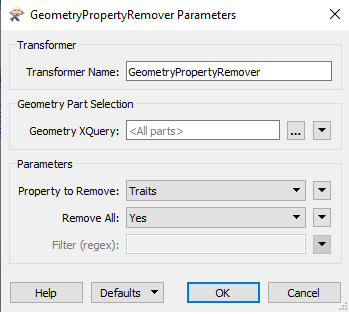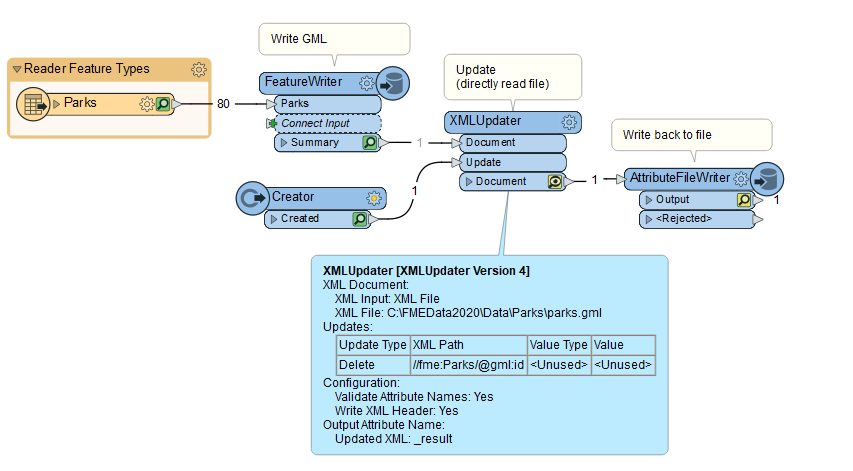Hi all,
I am designing an automated proces to transform a File Geodatabase into a GML that is validated by an XSD. The validation fails, because the gml_id is part of the geometry trait of the feature, where this shouldn't be the case. When temporarily turning the validate output parameter off, the result looks like this:

The red line in the picture above indicates the gml_id I'm talking about. For the XSD validation to work, the gml_id in the geometry needs to be removed.
When checking the attributes of the point feature, I see that the gml_id clearly is a geometry trait of this feature. See the picture below:
 With this information, I made the assumption that with a GeometryPropertyRemover, this gml_id could easily be removed, leaving me with only the coordinate system, the dimensions and the actual geometry. I used a GeometryPropertyRemover with the following settings. Note that my client uses FME 2018:
With this information, I made the assumption that with a GeometryPropertyRemover, this gml_id could easily be removed, leaving me with only the coordinate system, the dimensions and the actual geometry. I used a GeometryPropertyRemover with the following settings. Note that my client uses FME 2018:

After running the workspace, the FME Data Inspector shows that the gml_id is removed.
In the resulting GML however, the gml_id isn't removed, it has '-0' appended to it:

Quite strange, if you ask me. Does anyone have an idea why this happens and how I can solve this? I need that gml_id to be removed..
Cheers,
Vince







